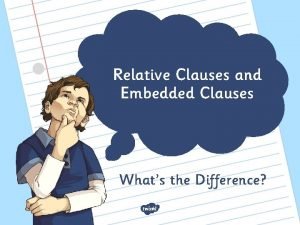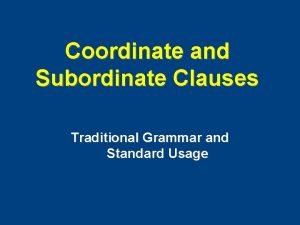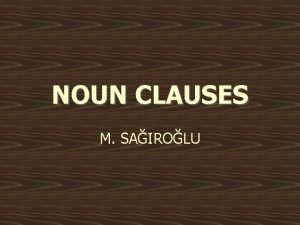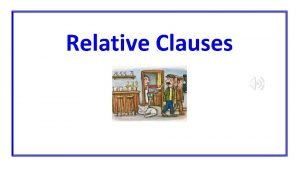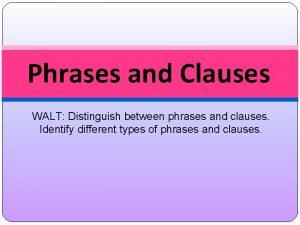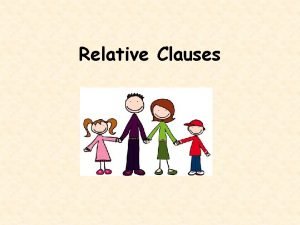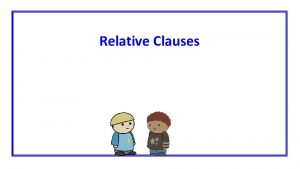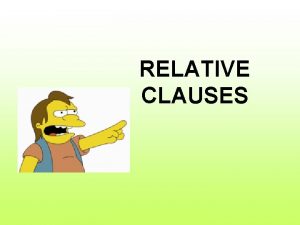Relative Clauses What is a relative clause How







- Slides: 7

Relative Clauses What is a relative clause? How can we write them?

Relative clauses can give more information about a noun or pronoun. They usually begin with a relative pronoun. Tell me more about the design. The design covers the box. The design, which appeared overnight, covers the box. The design, which is brightly coloured, covers the box. The design, which expresses gratitude, covers the box. Relative Pronouns (& Relative Adverbs) who, which, whom, whose, that, (where, when)

Relative clauses can give more information about a noun or pronoun. They usually begin with a relative pronoun. Tell me more about the box. The design covers the box which had been rather dull-looking. The design covers the box that no-one had noticed before. The design covers the box whose exact purpose no-one knew. Relative Pronouns (& Relative Adverbs) who, which, whom, whose, that, (where, when)

Relative clauses can also relate to whole clauses. Anna hated the art. This is a clause. Anna hated the art which annoyed Mckenzie. It was not the art that annoyed Mckenzie: it was that Anna hated it. The relative clause relates to the whole clause.

Punctuating Relative Clauses When the order is main clause + relative clause →no comma. relative clause main clause subordinate clause There were four hands that were shaped to spell ‘Love’. A comma would create an unnecessary break in the sentence. The relative clause tells us extra information about the main clause.

Punctuating Relative Clauses When the relative clause splits the main clause→ commas. Placing the clause in the middle main, relative clause, clause is called embedding. relative clause main clause subordinate clause main clause The design, which includes a toilet roll, , is striking and skilful. Commas separate the relative clause from the main clause.

Explore more Hamilton Trust Learning Materials at https: //wrht. org. uk/hamilton/.
